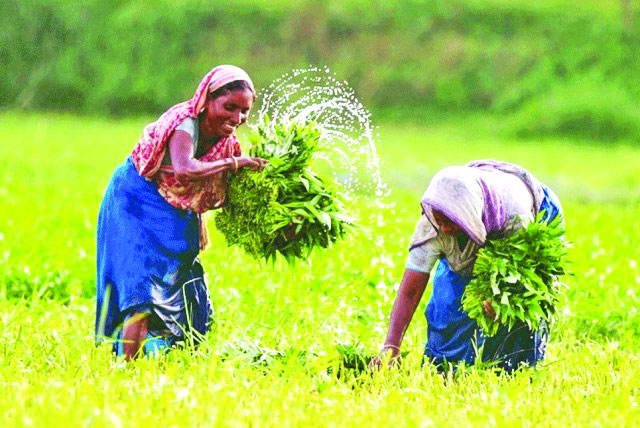Most growers in food insecurity
Mahfuz Emran : Those who produce foods are in the most food insecurity. This problem is more common in farming families than in any other profession. About 26.13 percent of households producing food grains through agriculture are moderately or severely food insecure. Apart from this, about 1 percent of agricultural families are in extreme food crisis or acute insecurity.
This information has emerged in the final report of a survey on food security by the Bangladesh Bureau of Statistics (BBS). The report titled Food Security Statistics-2023 was published on the organization’s website last Friday. The survey data was collected from 15th to 25th June last. This is the first such survey on food security in the country. The survey was conducted to prepare statistical data required for formulation of national priority policies for food security. Information has been collected through direct interviews from a total of 29,760 households at the field level.
According to the final report of Census and Home Census of BBS, the total population of the country is 16 crore 98 lakh 28 thousand 911 people. As such, 3.4 million people are at risk of food insecurity. And 1.7 million people are at risk of extreme insecurity. According to the final report of the BBS Household Income and Expenditure Survey, the number of households in the country is now 4.10 crore.
Acute food insecurity refers to a high risk of reducing food intake in the report. This can lead to severe conditions such as malnutrition, including hunger. Moderate food insecurity, on the other hand, refers to the inability to regularly consume a healthy, balanced diet.
Almost all the food products produced in the country come from villages. But that is where the risk of food insecurity is greatest. According to the BBS survey report, 24.12 percent of the people in the village are suffering from food insecurity. Whereas in urban areas this rate is 20.77 percent. Again, food insecurity is more in those families whose income comes from agriculture. 26.13 percent of such households have severe or moderate food insecurity. Rates of acute food insecurity are also high in such households. This rate is 0.95 percent. Those associated with the industrial sector are least at risk of acute food insecurity. Only zero decimal 12 percent.
According to the report, 25.5 percent of the country’s families take loans to meet the food shortage. As food insecurity is higher in rural areas than in urban areas, there is also a higher rate of borrowing to buy food. According to the report, 27.8 percent of the families in the village take loans. The rate is 23.6 percent in cities and 15.3 percent in city corporation areas.
The monthly expenditure of the family on food products has also been brought up in the BBS survey. It can be seen that, at the national level, the average monthly expenditure of a family on food items is Tk 12,053. In villages it is Tk 11,718,Tk 11,890 in the city. However, the highest expenditure is Tk 14,125 in the city corporation area.
The survey also brought out information on the cost of buying staple foods rice and fish. It can be seen that 24 percent of the expenditure of the village people on food products goes to buy rice. Which is the highest among such expenses. Again, the cost of rice in rural areas is higher than in urban and city corporation areas. A family in the village spends Tk 2,822 per month to buy rice. It takes Tk 2,540 in city and Tk 2,221 in city corporation area.
President Joe Biden tests positive for COVID-19 while campaigning in Las Vegas, has ‘mild symptoms’
International Desk: President Joe Biden tested positive for COVID-19 while traveling Wedne…








